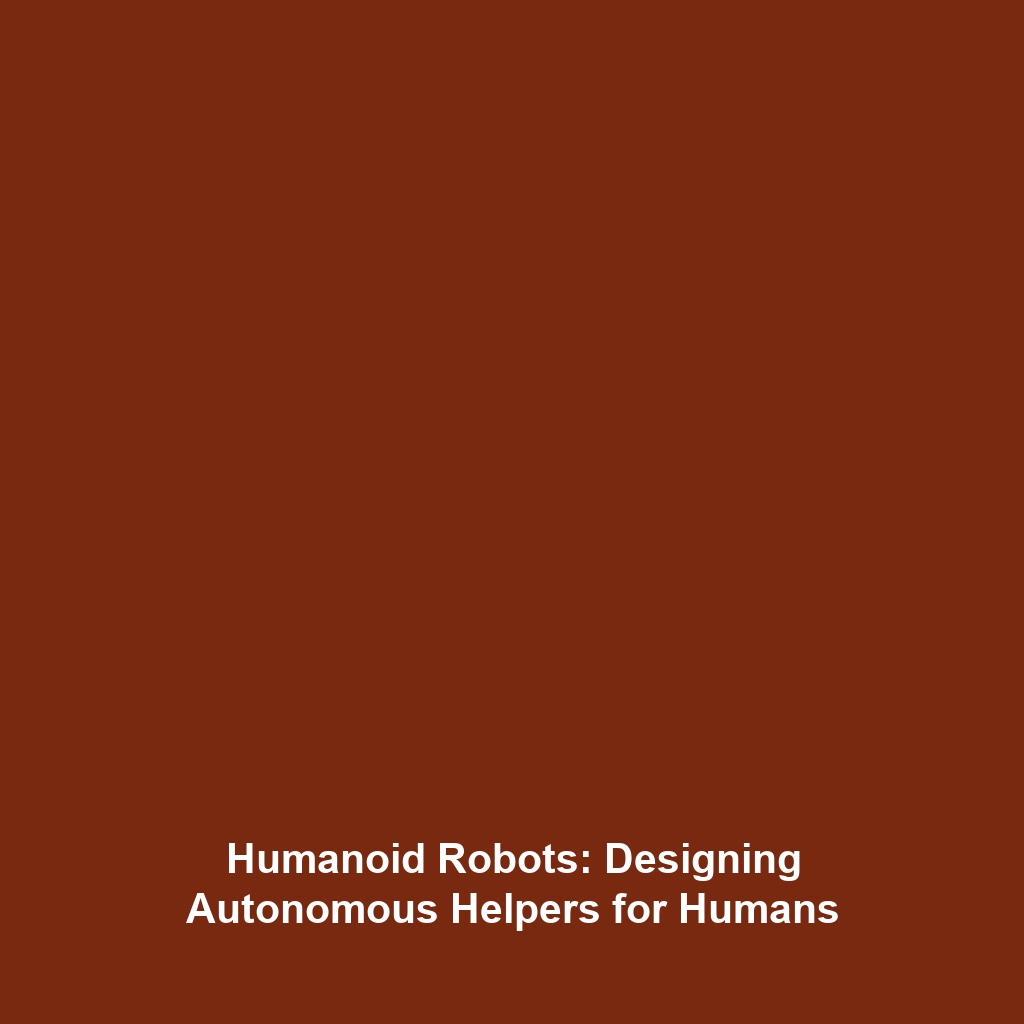How Humanoid Robots Use Speech Recognition to Communicate with Humans
Introduction
In recent years, the integration of speech recognition technology into humanoid robots has revolutionized how machines interact with humans. This remarkable advancement not only enhances the usability of robots in various settings but also signifies a move towards more intuitive human-robot communication. As the demand for intelligent and responsive robots grows, understanding how humanoid robots use speech recognition is essential for both researchers and enthusiasts alike. This article delves into the fundamental aspects of speech recognition within the context of humanoid robots and explores its implications across several domains.
Key Concepts
The integration of speech recognition technology into humanoid robots encompasses several fundamental principles and key concepts:
- Natural Language Processing (NLP): This is a critical area of Artificial Intelligence that enables robots to understand and respond to human language. By utilizing NLP, humanoid robots can interpret commands, questions, and conversational cues effectively.
- Acoustic Modeling: This involves analyzing the sound waves of human speech. Humanoid robots employ sophisticated algorithms to process these sounds, allowing for accurate recognition of spoken words and phrases.
- Machine Learning: Continual learning models enable humanoid robots to improve their speech recognition capabilities over time, thereby increasing their interaction quality with users.
Applications and Real-World Uses
Humanoid robots equipped with speech recognition technology are being utilized across various sectors. Here are some prime examples of how they are enhancing human interaction:
- Healthcare: In hospitals, humanoid robots can assist medical staff by taking patient inquiries or providing updates, showcasing how humanoid robots use speech recognition in a critical environment.
- Education: Educational robots can interact with students, answering questions, and providing personalized learning experiences, illustrating effective applications of speech recognition in humanoid robots.
- Customer Service: Humanoid robots in retail settings assist customers by answering queries and guiding them through services, demonstrating the practical use of this technology in the service industry.
Current Challenges
Despite the advances in speech recognition technology, several challenges remain in the effective utilization of humanoid robots:
- Accents and Dialects: Variability in human speech patterns can lead to misunderstandings, presenting challenges for speech recognition systems.
- Noise Interference: Background noise can significantly affect a robot’s ability to accurately decipher speech, highlighting issues in robot communication.
- Contextual Understanding: Robots often struggle with understanding context, making it difficult to respond appropriately in conversational scenarios.
Future Research and Innovations
The future of humanoid robots and their speech recognition capabilities looks promising, with ongoing research focusing on:
- Enhanced NLP Algorithms: Development of more nuanced algorithms that can better understand and respond to complex human queries.
- Emotion Recognition: Integrating emotional context into speech recognition to allow for more empathetic interactions.
- Multi-lingual Capabilities: Research into developing robots that can effectively communicate in multiple languages without error, broadening their usability globally.
Conclusion
In conclusion, the interplay between humanoid robots and speech recognition technology is pivotal for advancing human-robot interaction. The developments in this field not only enhance functionality but also foster a deeper connection between humans and machines. As we look to the future, it becomes increasingly important to address the challenges and continue innovating to make humanoid robots more effective communicators. For further exploration, consider reading our articles on future technologies in robotics and current challenges facing AI robots.









